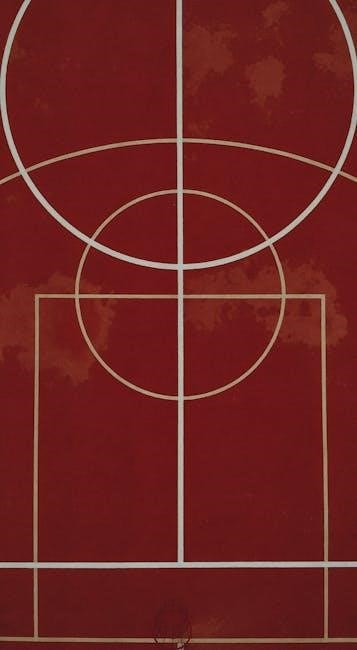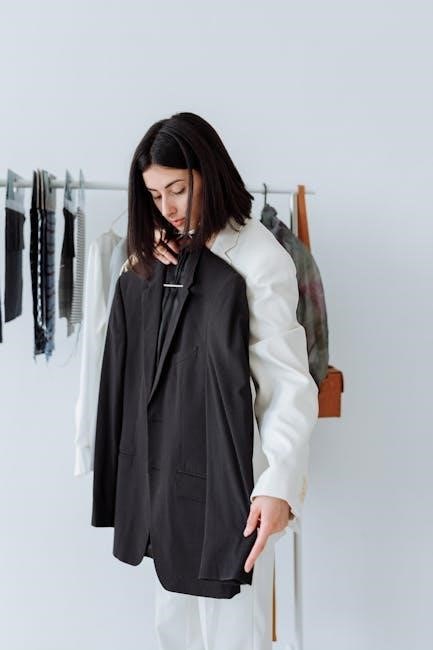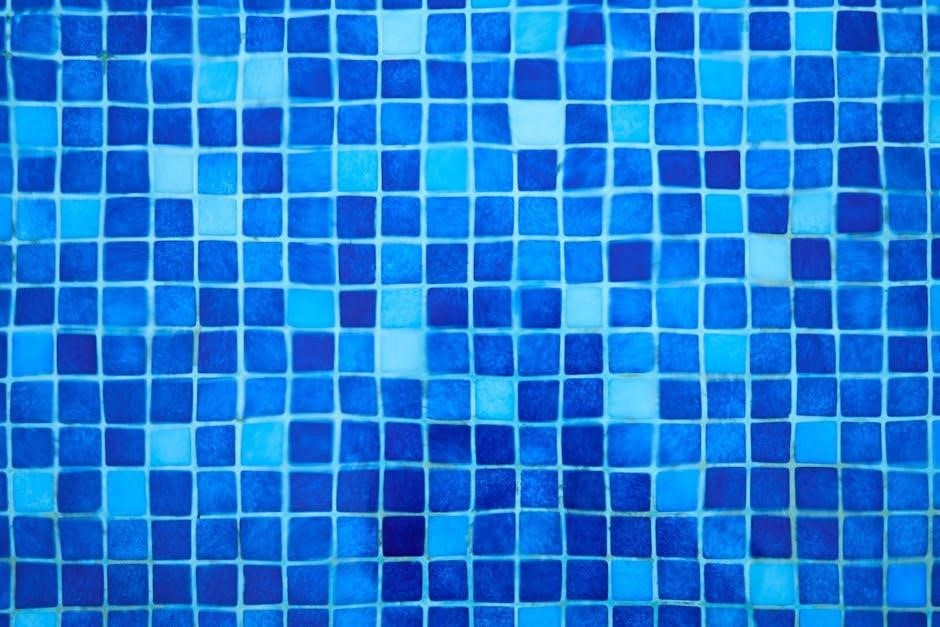Biofinity MF lenses provide clear vision and comfort for presbyopic patients. This guide helps optometrists fit these monthly lenses, ensuring optimal hydration and comfort with Aquaform Technology.

Overview of Biofinity Multifocal Lenses
Biofinity Multifocal lenses are designed to address presbyopia, offering clear vision at all distances. They combine Balanced Progressive Technology with Aquaform Technology, ensuring hydration and comfort. These monthly lenses provide a wide range of parameters, catering to diverse visual needs. They are ideal for patients seeking seamless transitions between near, intermediate, and far vision. The lenses are known for their natural adaptation process, minimizing visual disturbances. With a focus on patient comfort and optical clarity, Biofinity Multifocal lenses are a preferred choice for many optometrists and patients alike.
- Designed for presbyopic patients.
- Combine hydration and optical clarity.
- Offer a wide range of parameters.
Importance of Proper Fitting
Proper fitting of Biofinity MF lenses is crucial for ensuring optimal vision and comfort. Incorrect fitting can lead to blurry vision, eye strain, or discomfort, which may result in patient dissatisfaction. Accurate assessment of eye dominance, refraction, and lens selection is essential to meet individual visual needs. Proper fitting also minimizes adaptation time and enhances overall lens performance. By following the fitting guide, eye care professionals can address presbyopia effectively, providing sharp vision at all distances. Correct fitting ensures patient satisfaction and maximizes the benefits of Biofinity MF’s advanced technologies.
- Ensures clear vision and comfort.
- Reduces adaptation time.
- Minimizes potential discomfort.

Understanding Biofinity MF Lens Design
Biofinity MF lenses incorporate Balanced Progressive Technology for seamless near, intermediate, and far vision. Aquaform Technology ensures high hydration and comfort, while Optimized Toric Lens Geometry addresses astigmatism and presbyopia effectively.
Key Features and Technologies
Biofinity MF lenses feature Balanced Progressive Technology, designed to provide seamless transitions between near, intermediate, and far vision. The Aquaform Technology ensures high hydration levels, enhancing comfort and reducing dryness. Optimized Toric Lens Geometry addresses astigmatism while maintaining clarity for presbyopic patients; These lenses also offer a wide range of parameters, including varying ADD powers and spherical equivalents, making them suitable for diverse patient needs. The advanced design minimizes distortion and ensures optimal visual acuity at all distances. These technologies work together to deliver exceptional comfort, clarity, and adaptability, making Biofinity MF lenses a reliable choice for presbyopic individuals seeking multifocal correction.
Available Parameters and Options
Biofinity MF lenses offer extensive parameters to accommodate various patient needs. Sphere powers range from -10.00 to +6.00 diopters, with cylinder options available for astigmatism correction. The ADD powers vary from 0.75 to 2.50 diopters, allowing customization for different presbyopic requirements. Both dominant and non-dominant eye designs are available, ensuring tailored correction. These lenses also come in two configurations: D (Dominant) and N (Non-Dominant), offering flexibility based on patient dominance. The wide range of parameters ensures that practitioners can fit a diverse patient base effectively, addressing both near and far vision needs with precision and comfort.

Pre-Fitting Evaluation
A thorough pre-fitting evaluation ensures proper lens selection. This includes patient consultation, eye examination, and refraction to assess visual needs and expectations, ensuring optimal Biofinity MF lens performance.
Patient Consultation and Expectations
Patient consultation is crucial for successful Biofinity MF fitting. Discuss lifestyle, visual priorities, and daily activities to set realistic expectations. Address concerns about comfort and adaptation. Ensure understanding of the fitting process and the importance of follow-ups. Highlight benefits like clear near, intermediate, and distance vision. Explain that adaptation may take time and that adjustments might be needed. Emphasize the importance of proper lens care and hygiene. Use this opportunity to educate patients on what to expect during the fitting process and how to manage any initial discomfort. This step ensures alignment of patient expectations with lens performance, fostering satisfaction and compliance.
Eye Examination and Refraction
A comprehensive eye examination is essential before fitting Biofinity MF lenses. Conduct a thorough refraction to determine the patient’s spherical equivalent and astigmatism. Use keratometry to measure corneal curvature and ensure proper lens alignment. Perform a slit-lamp evaluation to assess ocular health. Verify eye dominance using the fogging technique to guide lens power selection. Measure near and intermediate visual acuity to understand the patient’s specific needs. Ensure the prescription is accurate and up-to-date, as small changes can impact multifocal performance. Correct for vertex distance to ensure precise power calculation. This step lays the foundation for a successful fitting by providing critical data for lens selection and customization. Accurate refraction is key to optimizing vision at all distances.

Fitting Process
The Biofinity MF fitting process begins with refraction and eye dominance checks. Select the lens design based on ADD power, ensuring proper alignment and comfort. Allow adaptation time for optimal results.
Initial Steps: Refraction and Eye Dominance
Begin with a new refraction to ensure accurate prescription. Verify eye dominance using the fogging technique, which involves momentarily blurring the non-dominant eye. This step is crucial for achieving clear distance vision. Select the distance prescription based on the spherical equivalent, corrected for vertex distance. Choose between D (dominant) or N (non-dominant) lens designs based on the required ADD power. For example, a 1.00D ADD for the dominant eye and 1.50D for the non-dominant eye. This ensures balanced vision and minimizes adaptation issues. Proper initial steps set the foundation for a successful fitting process.

Lens Selection and Power Determination
Select the appropriate Biofinity MF lens design (D or N) based on the required ADD power. For lower ADDs (e.g., 1.00D), the D design is ideal, while higher ADDs (e.g., 1.50D or above) benefit from the N design. Choose the lens power according to the spherical equivalent and vertex-corrected prescription. Ensure the selected parameters align with the patient’s visual needs and lifestyle expectations. CooperVision’s fitting guide provides detailed conversion tables and step-by-step instructions to simplify this process. Accurate lens selection and power determination are critical for achieving optimal vision and patient satisfaction. This step ensures the lenses meet the patient’s specific requirements for distance, intermediate, and near vision.
Adaptation Period and Initial Assessment
After lens selection and initial placement, allow a minimum of 15 minutes for the patient to adapt to the Biofinity MF lenses. This period ensures proper lens equilibration and comfort. Assess vision under various conditions, including near, intermediate, and distance tasks. Evaluate binocular vision to ensure both eyes work together effectively. Address any visual discrepancies by adjusting the lens power or design. Patient feedback on comfort and vision clarity is crucial during this phase. If distance vision is compromised, consider re-evaluating the ADD power or switching designs. Proper adaptation and initial assessment are key to achieving optimal results and patient satisfaction with Biofinity MF lenses.

Troubleshooting Common Issues
Address distance vision problems by verifying lens power and design. Improve near vision by adjusting ADD power or re-evaluating lens selection. Ensure proper comfort and fit.
Addressing Distance Vision Problems
Distance vision issues with Biofinity MF lenses often stem from incorrect lens power or design selection. Ensure accurate refraction and verify the spherical equivalent for the dominant eye. Practical steps include rechecking the prescription, verifying lens orientation, and confirming the selected ADD power aligns with patient needs. The fogging technique can help reassess eye dominance. If problems persist, consider switching between D (dominant) or N (non-dominant) lens designs based on the required ADD power. Proper alignment of the lens with the visual axis is crucial. Always refer to the Biofinity MF fitting guide for specific recommendations on power adjustments and design selection to optimize distance vision clarity and patient satisfaction.
Improving Near Vision and Comfort
Biofinity MF lenses incorporate Balanced Progressive Technology to enhance near vision clarity. To improve comfort and near vision, ensure proper alignment of the near zone with the pupil. Start with a new refraction and verify the ADD power, selecting the appropriate D or N lens design. Allow the lens to equilibrate for at least 15 minutes before assessment. If near vision remains blurry, consider adjusting the ADD power or switching lens designs based on patient needs. Environmental factors, such as lighting, can impact comfort; assess vision in varying conditions. Encourage patients to adapt gradually, emphasizing the importance of proper fit and hydration from Aquaform Technology for long-lasting comfort and clear near vision.
The Biofinity MF Fitting Guide provides a comprehensive approach to optimizing vision and comfort for presbyopic patients. With a 93% success rate on initial fitting, it ensures accurate lens selection and adaptation. By leveraging Balanced Progressive Technology and Aquaform Technology, Biofinity MF lenses offer exceptional clarity and hydration. Proper fitting, patient education, and follow-up care are crucial for maximizing satisfaction. This guide serves as an invaluable tool for optometrists, helping to address diverse patient needs effectively. By following the outlined steps, eye care professionals can deliver tailored solutions, enhancing both near and distance vision while ensuring long-term comfort and optical performance.
